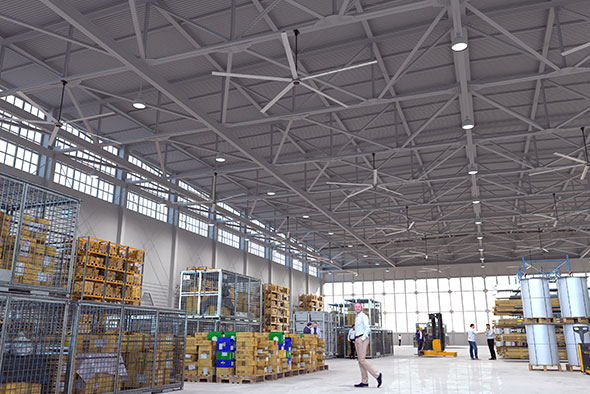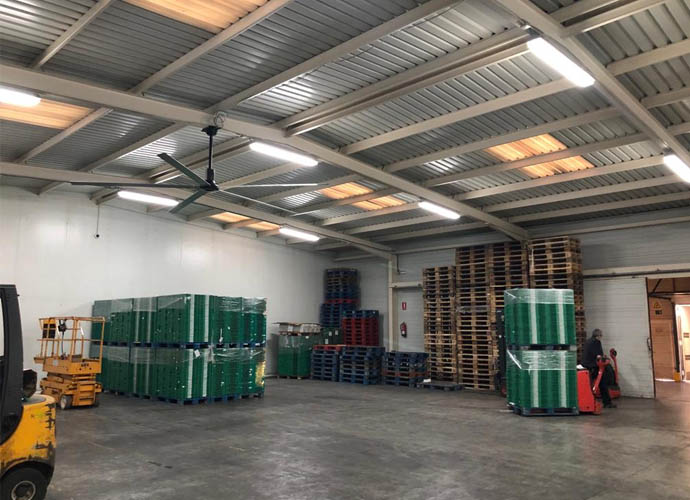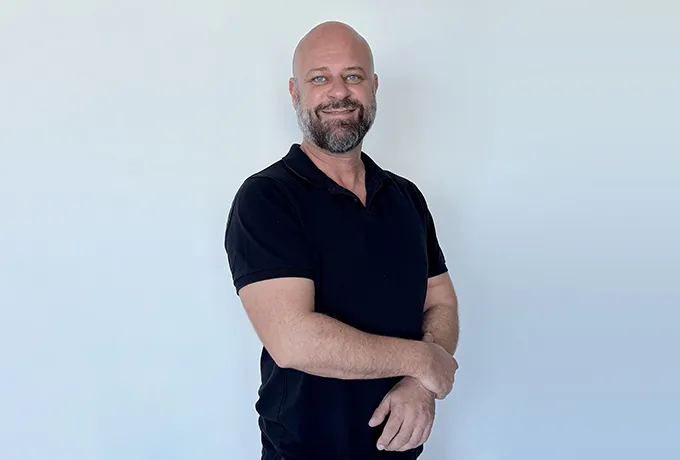Big spaces like warehouses, factories, and gyms face poor airflow. The air is hot, stale, or even unsafe. Energy bills go up. Workers feel tired. Products can spoil. All because fans can’t move enough air, or move it the wrong way. This is not just uncomfortable—it’s a serious problem for air quality and productivity.
The wrong industrial fan can make things worse. If airflow rate (CFM) is too low, some corners never cool down. If static pressure is not right, air gets blocked—fans use too much power, but deliver poor results. Over 73% of fan failures happen because static pressure is not matched to the real-world system . If a fan uses too much power, your energy costs soar—did you know 64% of total fan expenses come from excessive energy use ? And if your fans do not meet safety rules (like OSHA’s 90 dB(A) sound limit or the new U.S. FEI ≥ 1.0 regulation), you could face fines, shutdowns, or unscheduled maintenance .
Let’s look at real science—how superior engineering and correct specification make all the difference. At Les fans de Vindus, we combine Swedish engineering, sustainable design, and smart manufacturing to offer industrial fans, especially High-Volume Low-Speed (HVLS) fans, that really solve these problems. Our fans change large spaces with smooth, powerful, and energy-efficient airflow.
Industrial fan specification is the careful setting of technical rules so you get the right airflow, pressure, noise, and energy use for your building or factory. It is the blueprint for better air.

What is an Industrial Fan Specification
Key Parameters:
| Need | Specification | Why It Matters |
| Move air across big spaces | CFM (Cubic Feet/Minute) | Too low and air won’t reach every corner |
| Push air through filters/ducts | Static pressure (in/wg) | Needed to overcome air resistance |
| Keep bills low, stay green | Efficiency (FEI, SFP) | Reduces energy waste and carbon output |
| Meet safety rules | Noise, insulation, IP | Protects workers and machinery |
| Work in tough places | Material, IP, ATEX | Resists corrosion, dust, water, explosions |
Unlike small, fast ceiling fans, Ventilateurs HVLS move huge volumes of air (over 100,000 CFM) at low speeds (e.g., <100 RPM). They produce a gentle but massive breeze—perfect for warehouses, gyms, and big halls.
Avantages:
For more technical info on our HVLS fans, visit ventilateurs hvls or read about best HVLS fans.

Grands ventilateurs industriels
Table: HVLS Fan Specs and Service Life
| Material | Service Life (years) | Idéal pour | Example Application |
| Coated Steel | 7–12 | Most interiors | Manufacturing, gymnasiums |
| Stainless Steel | 15–20 | Food, wet areas | Dairy, hospitals, commercial kitchens |
| FRP | 20–25 | Corrosive | Chemical, wastewater treatment |
Learn more about damp-rated and industrial ceiling fans for manufacturing: ventilateurs de plafond industriels pour la fabrication.
Fan power and airflow change with speed and size. The laws are simple:
Getting the right spec keeps your air even and your bills low.
| Change | Effect on Airflow (CFM) | Effect on Power (kW) |
| +10% speed | +10% | +33% |
| +10% blade length | +21% | +33% |
| Application | Specification Change | Résultat |
| Cement Plant | Backward-curved fans (FEI 1.3) | 35% energy cut, ROI = 16 months |
| Wastewater Treatment | FRP, IP66 HVLS fans | No shutdowns, $78k/year in saved maintenance |
| Paint Shop | ATEX-rated, VFD controls | Cut idle airflow 40%, full safety compliance |
| Dairy Facility | SS fans, new blade aerodynamics | Noise down 22 dB(A), lubrication intervals 4x longer |
What should you look for?
Best Practice Table: Key Spec Checklist
| Item | Why? | How to Check |
| CFM & Pressure | Ensures you cover all spaces | Ask for AMCA 210 test data |
| FEI | Legal and cost reasons | Check manufacturer documents |
| Material | Longevity, safety, hygiene | Request case studies, warranty info |
| Bruit | Worker safety, compliance | See decibel (dB(A)) rating |
Vindus HVLS fans are found in:

HVLS Fan in warehouse
Why choose us?
Getting the right industrial fan specifications is not about guesswork. It is about clear science—matching airflow, pressure, efficiency, and materials to your real space and needs. With the right products and partners, you get air that moves, energy bills that shrink, and spaces people love.

Salut, je suis Michael Danielsson, PDG de Vindus Fans, avec plus de 15 ans d'expérience dans le secteur de l'ingénierie et de la conception. Je suis ici pour partager ce que j'ai appris. Si vous avez des questions, n'hésitez pas à me contacter à tout moment. Grandissons ensemble !